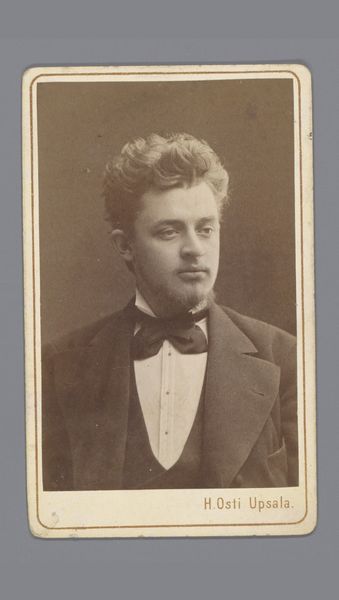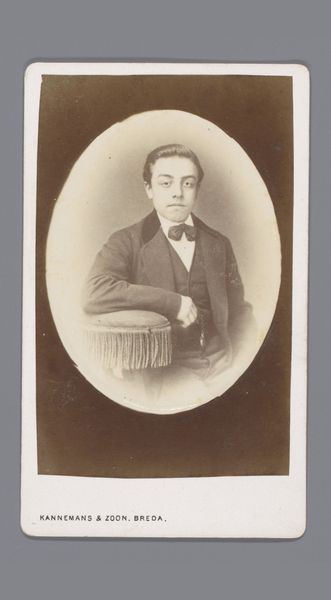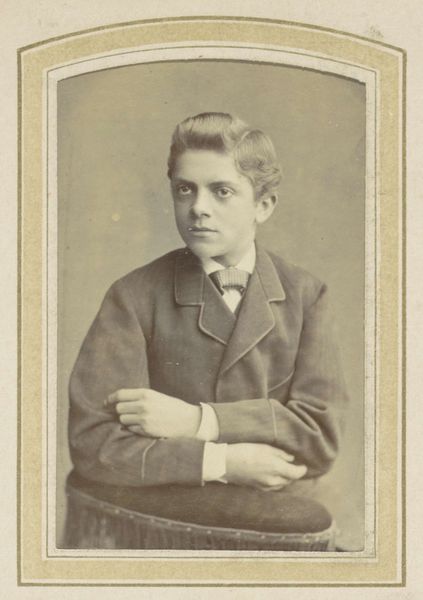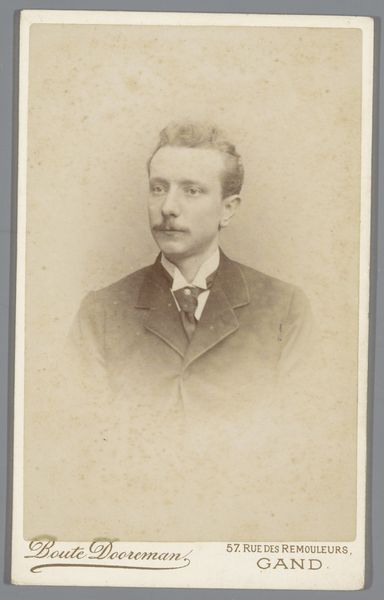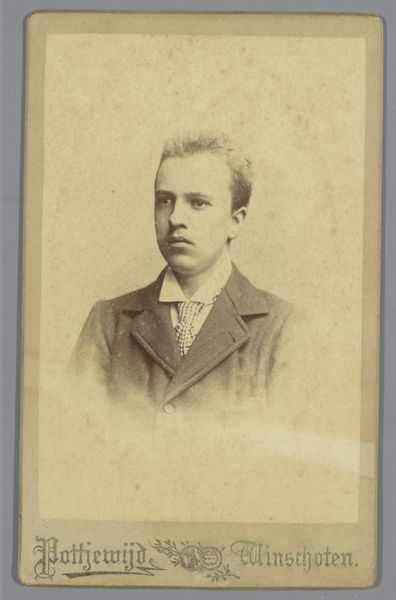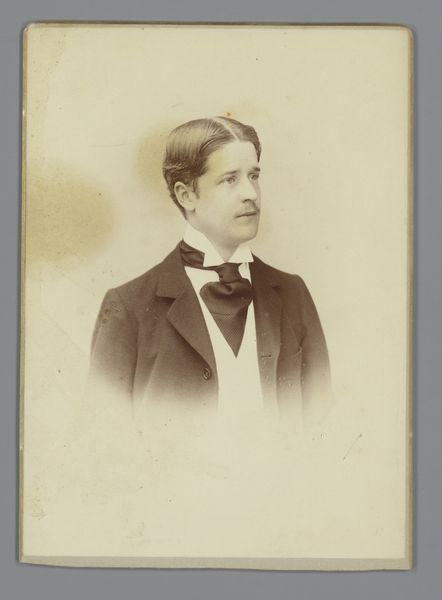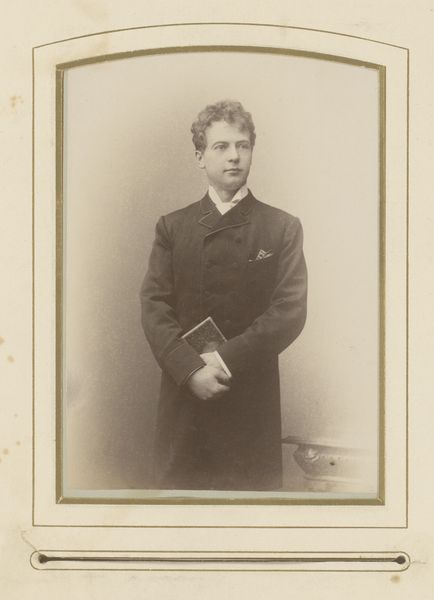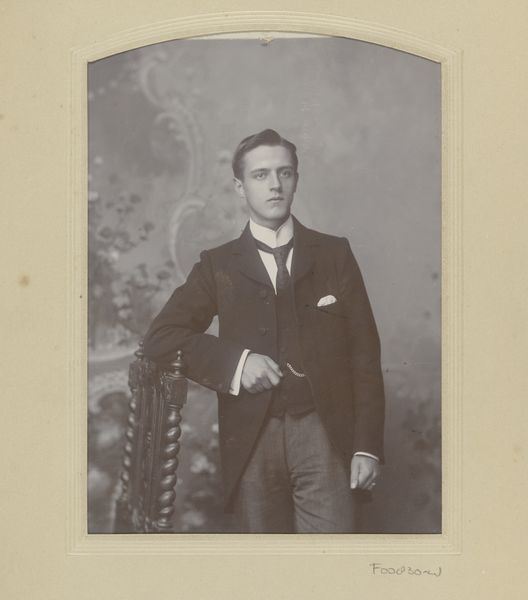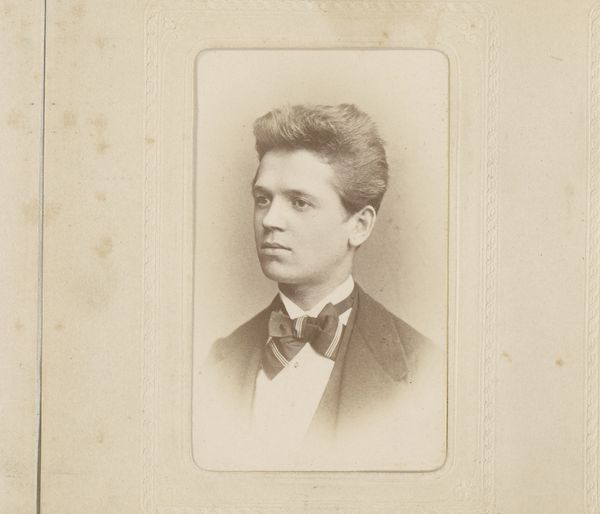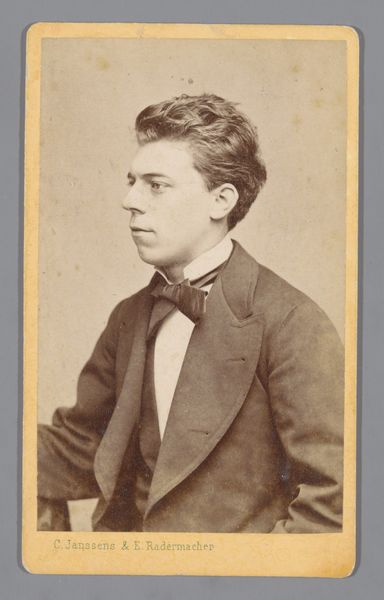
photography, gelatin-silver-print
#
portrait
#
16_19th-century
#
photography
#
historical photography
#
portrait reference
#
framed image
#
gelatin-silver-print
#
19th century
#
realism
Dimensions: height 90 mm, width 57 mm
Copyright: Rijks Museum: Open Domain
Curator: Standing before us is a captivating gelatin-silver print simply titled, "Portret van een onbekende man achter een balustrade"—or, Portrait of an Unknown Man Behind a Balustrade. The portrait, attributed to De Lavieter & Co., dates to around 1865-1903, a time when photography was transforming portraiture. Editor: My immediate thought is melancholy. There's something profoundly affecting about his gaze, this youth behind a balustrade looking almost resigned, if not sad. I wonder if he sees the camera as a reflection of his place in the world, solid yet distant. Curator: Absolutely. He’s very well positioned within certain power structures of his era, clearly belonging to the bourgeoisie as evidenced by his dress and the setting. The balustrade functions almost like a stage prop. The photo creates an illusion of proximity but, ironically, underlines the sitter's distance from us and possibly the public sphere as well. It marks a social distinction that was becoming more evident and contested at this time. Editor: The balustrade also operates, I feel, almost like a symbolic barrier. The way his hand rests casually on it suggests confidence, but also restriction. Perhaps an internal battle between societal expectations and the desires of youth? Curator: I would suggest the balustrade serves multiple functions: it certainly gives the portrait structure, separating background from the figure and suggesting status through its architectural allusion. However, the man remains anonymous; there are no further markings to clarify who exactly is represented here. He might, as the work suggests, stand in for any number of people who were becoming increasingly visible through new media, yet remain elusive nonetheless. Editor: His eyes carry that complexity too. Are we meant to admire, envy, or perhaps pity? What societal weight do you think an "unknown man" photograph held in the late 19th century? Curator: Great question. Well, photographic portraiture at that time democratized visibility. Suddenly, not just the elite could have their likeness recorded, but also aspiring social groups sought images for recognition and upward mobility. Photography became a crucial tool in identity formation, not just for individuals but social strata seeking representation. Editor: The image holds onto something. It's an emblem of personhood in the face of the sweeping changes of an era. It leaves a sense of shared, deeply human emotion despite his unknown place and story. Curator: Exactly. It makes one consider all those stories—countless other faces of change represented but remaining nameless in archives today. It humanizes a certain period.
Comments
No comments
Be the first to comment and join the conversation on the ultimate creative platform.

